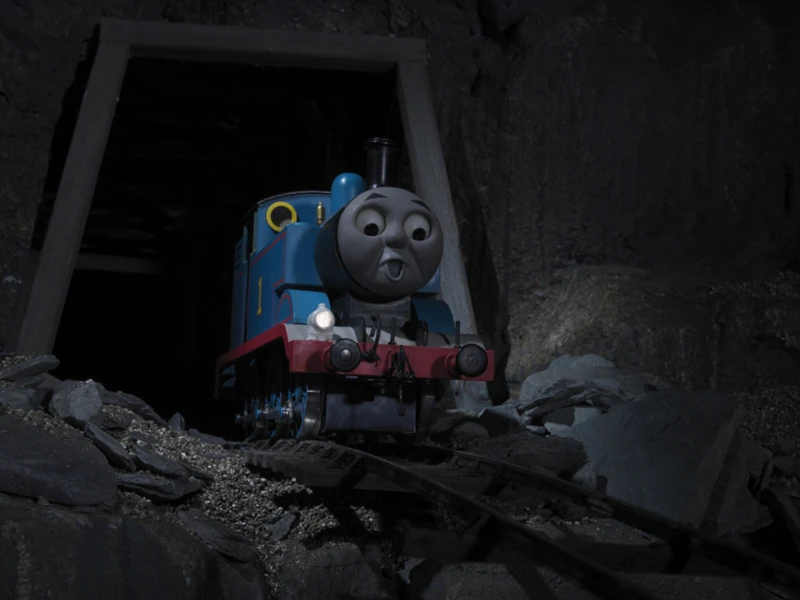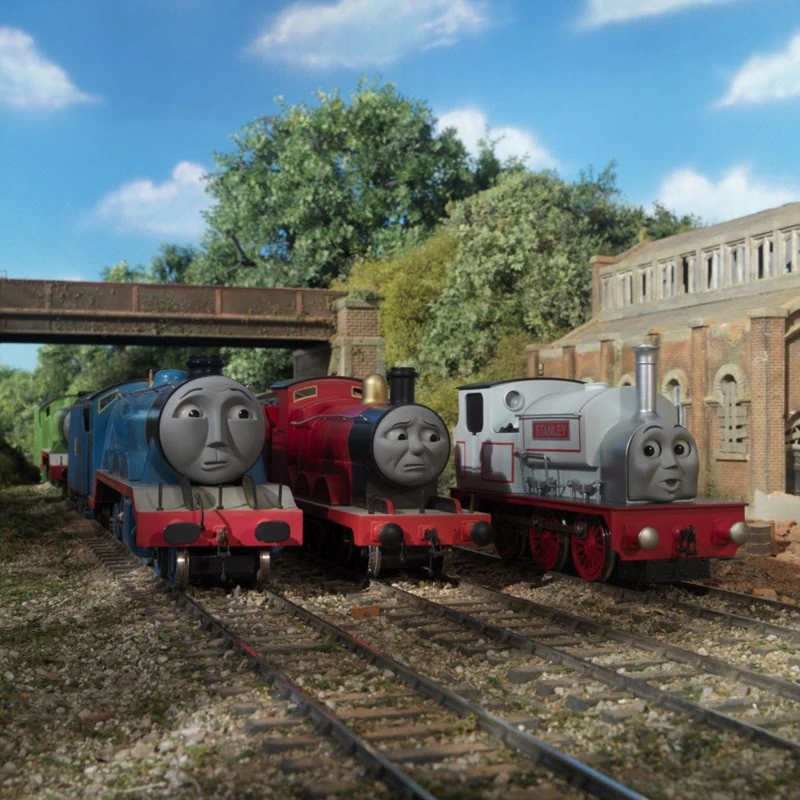Once Thomas and the Magic Railroad (2000) failed to make a
lasting impression in theaters, HIT Entertainment, who recently acquired the
rights to the show made their first experimental special in 2005. Thomas &
Friends: Call All Engines! (2005) was a trial run for the studio to see if
whether or not home video release movies would be profitable or not for the
show. As time went on though, it was decided that the show would enter the
realm of CGI and leave the practical sets and models behind. Entering the start
of season 12 was the beginning of this next experiment where CGI was mixed with
live-action. However HIT Entertainment released one more home video special.
This would be their last special completely filmed with live-action models. And
for what they were able to make, it is not vastly stronger by comparison to
Thomas & Friends: Calling All Engines! (2005), but the studio did make
several improvements. This shows that they're listening to the people who watch
the show.
 |
| Thomas discovers some crazy stuff |
Making this particular feature all the more unique was the
inclusion of James Bond star Pierce Brosnan to narrate the story. At one point
Brosnan was going to be the narrator to replace Michael Brandon and Michael
Angelis respectively. However when HIT Entertainment moved fully to CGI
production, his status was changed to temporary. The story for this special is
about how Thomas ends up discovering the town of Great Waterton. An area on
Sodor that had been lost to the ages. However with Thomas discovering it, Sir
Topham Hatt gave him full reign over the reconstruction of it. Hatt also
brought on Stanley to help out, a new tank engine that the rest of the engines
found a liking too. This unfortunately causes Thomas to feel threatened. As an
overall story, this kind of plot isn't unheard of. Nor is the story of Thomas
feeling no longer like the number one engine that uncommon either. But being
that this was Thomas' final adventure in physical model form, it's apparent the
film crew wanted as much as possible.
The script to this special was written by Sharon Miller, a
frequent collaborator with the franchise that would end up annoying many fans.
Right now though, the work she completed here is harmless by comparison to her
future work. The story may be somewhat cliche in certain areas but it isn't
horrendous. This was also her real first feature credit. Directing again was
given to Steve Asquith, which at this point was the most trusted hands that
could and should handle the execution. So here's what has improved since Thomas
& Friends: Calling All Engines! (2005). Remember those learning segments
placed in almost every major scene in said special? Well no longer! There are
none of that here and that's great. Many of those learning segments contained
no value and felt more like filler just to complete the hour. This special
shows things like that are not a necessity. Making things even better was the
wider use of all the characters introduced into the Thomas & Friends show
so far.
In this entry, not only the main eight steam engines (the
steam team) are used, but several other minor characters. Narrow gauge engines
that belong to Mr. Percival are also featured as well as the Jack the Sodor
Construction company. The set of characters that were to start the spin-off
series, but would end being canceled. As for Thomas feeling threatened about
the newcomer engine Stanley, that's understandable to some degree. The thing is
though, Stanley never came across with bad intentions to begin with. So it's
odd Thomas would make such an assumption without trying to further judge
Stanley. Guess that's what happens when you're the number one for so long.
These are easy misunderstandings but they are ones treated to the extreme. The
real drawbacks to this film though are some real obvious things. That being the
lack physical limitations. There's a derailment that occurs where an engine
flips off the tracks. This is done so to not frighten little viewers but most
trains are unusable after a full rollover.
 |
| Stanley (far right) |
The other is the use of flimsy bridges and engines jumping
gaps. These kinds of things are to make the adventure exciting but this just
feels improbable. A thinly constructed bridge will not hold a heavy metal tank
engine. However, this does not take away from the set pieces used. Several sets
and miniatures used within the running time are full of detail and make the
visuals that much more realistic. There's also a collapse of a giant metal
truss bridge and it looks awesome. Brosnan's narration of the story is also
unique. He's like no other. His vocals are much smoother by comparison to
anyone else and it works well. It's sad he didn't go further as the narrator.
For music, the score and sing-along was composed by only Robert Hartshorne this
time and not with Ed Welch. Everything there is done really well. The best of
the songs are probably "Jobs a Plenty" and "Where oh Where is
Thomas". Oddly enough the ending also includes a rap/pop song for Thomas.
It's not bad but feels definitely like a fish out of water.
Points Earned -->7:10



